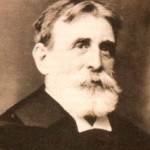 After examining a number of passages that attest to Scripture’s inspiration and authority, which fills the whole New Testament; and which includes not only such direct assertions of divinity and infallibility for Scripture as these, but, along with them, an endless variety of expressions of confidence in, and phenomena of use of, Scripture which are irresistible in their teaching when it is once fairly apprehended.
After examining a number of passages that attest to Scripture’s inspiration and authority, which fills the whole New Testament; and which includes not only such direct assertions of divinity and infallibility for Scripture as these, but, along with them, an endless variety of expressions of confidence in, and phenomena of use of, Scripture which are irresistible in their teaching when it is once fairly apprehended.
The induction must be broad enough to embrace, and give their full weight to, a great variety of such facts as these: the lofty titles which are given to Scripture, and by which it is cited, such as “Scripture,” “the Scriptures,” even that almost awful title, “the Oracles of God”; the significant formulæ by which it is quoted, “It is written,” “It is spoken,” “It says,” “God says”; such modes of adducing it as betray that to the writer “Scripture says” is equivalent to “God says,” and even its narrative parts are conceived as direct utterances of God; the attribution to Scripture, as such, of divine qualities and acts, as in such phrases as “the Scriptures foresaw”; the ascription of the Scriptures, in whole or in their several parts as occasionally adduced, to the Holy Spirit as their author, while the human writers are treated as merely his media of expression; the reverence and trust shown, and the significance and authority ascribed, to the very words of Scripture; and the general attitude of entire subjection to every declaration of Scripture of whatever kind, which characterizes every line of the New Testament.
The effort to explain away the Bible’s witness to its plenary inspiration reminds one of a man standing safely in his laboratory and elaborately expounding—possibly by the aid of diagrams and mathematical formulæ—how every stone in an avalanche has a defined pathway and may easily be dodged by one of some presence of mind. We may fancy such an elaborate trifler’s triumph as he would analyze the avalanche into its constituent stones, and demonstrate of stone after stone that its pathway is definite, limited, and may easily be avoided.
 But avalanches, unfortunately, do not come upon us, stone by stone, one at a time, courteously leaving us opportunity to withdraw from the pathway of each in turn: but all at once, in a roaring mass of destruction.
But avalanches, unfortunately, do not come upon us, stone by stone, one at a time, courteously leaving us opportunity to withdraw from the pathway of each in turn: but all at once, in a roaring mass of destruction.
Just so we may explain away a text or two which teach plenary inspiration, to our own closet satisfaction, dealing with them each without reference to its relation to the others: but these texts of ours, again, unfortunately do not come upon us in this artificial isolation; neither are they few in number. There are scores, hundreds, of them: and they come bursting upon us in one solid mass. Explain them away? We should have to explain away the whole New Testament. What a pity it is that we cannot see and feel the avalanche of texts beneath which we may lie hopelessly buried, as clearly as we may see and feel an avalanche of stones!
Warfield, B. B. (2008). The Works of Benjamin B. Warfield, Volume 1: Revelation and Inspiration (65–66). Bellingham, WA: Logos Research Systems, Inc.
HT: Dan Phillips
